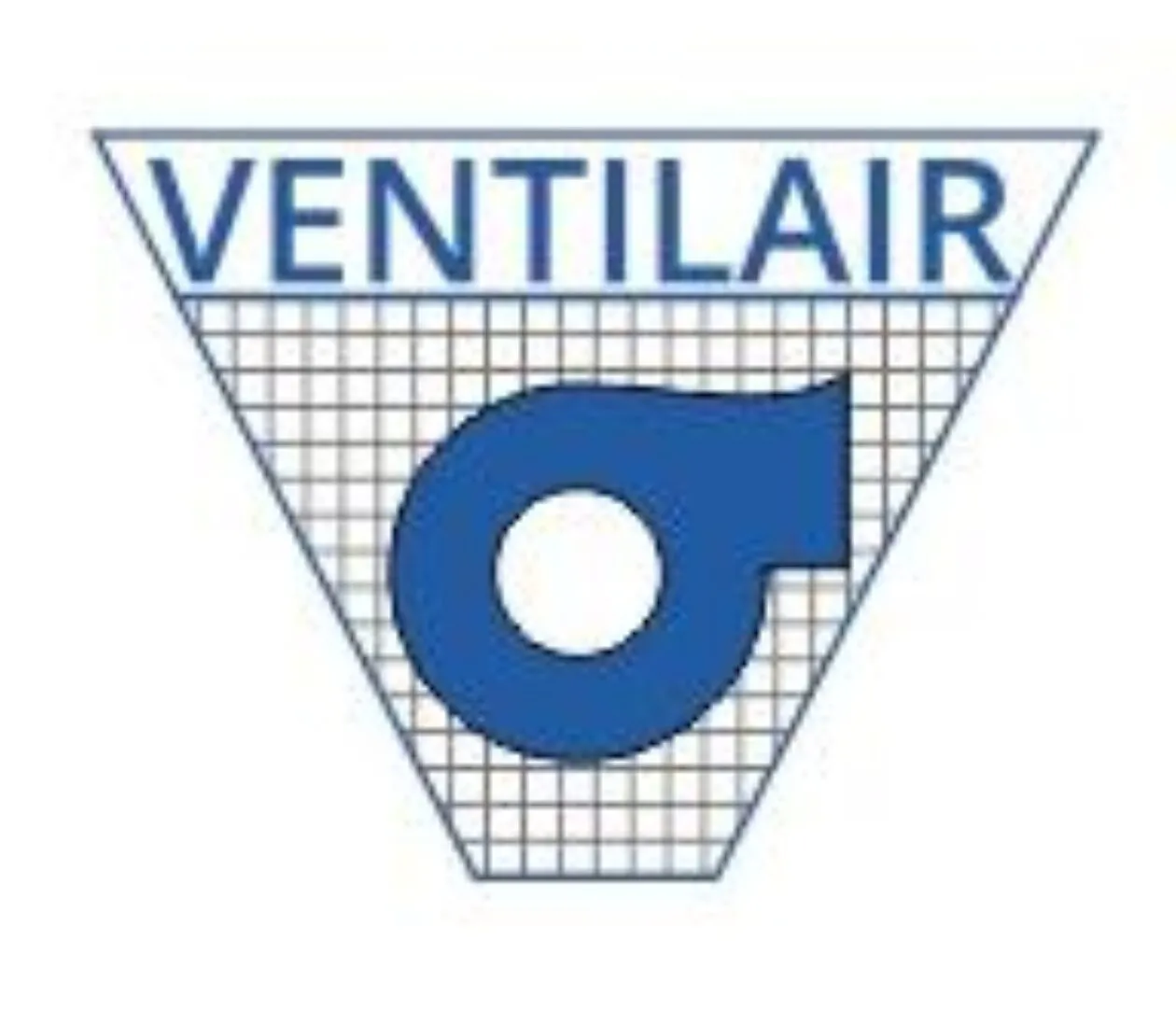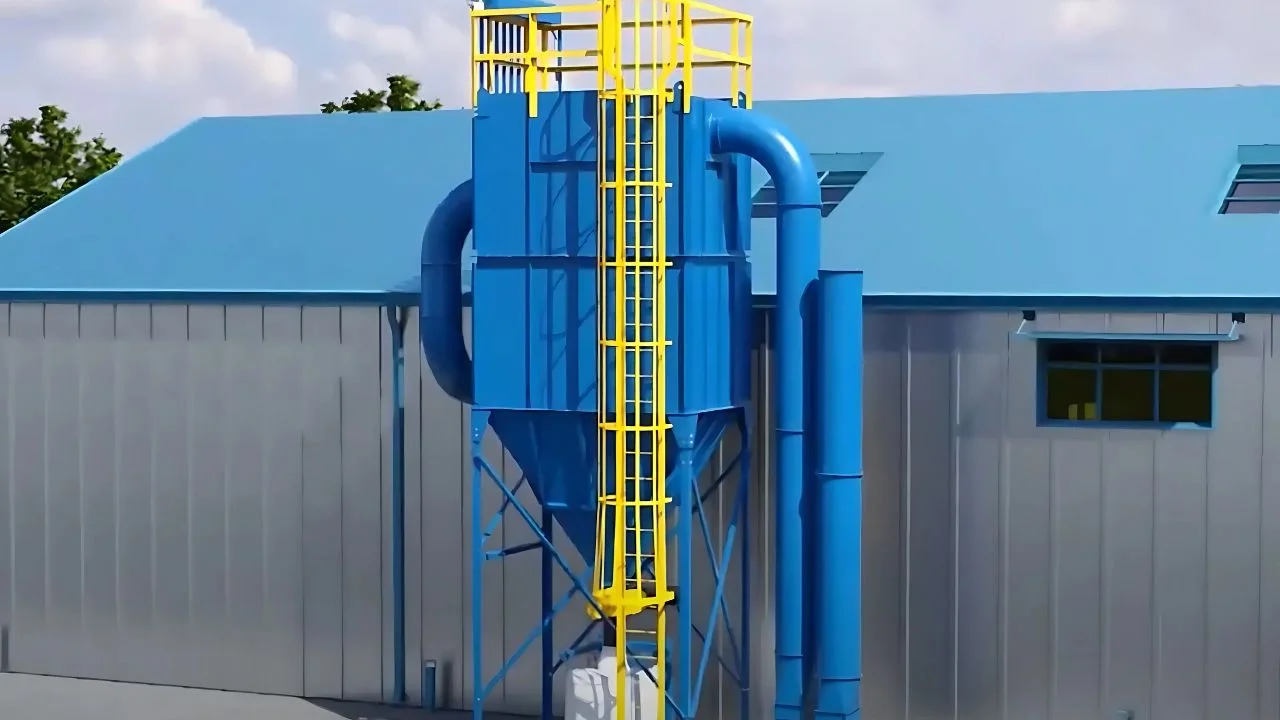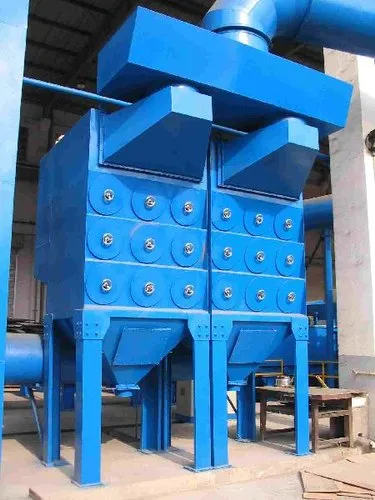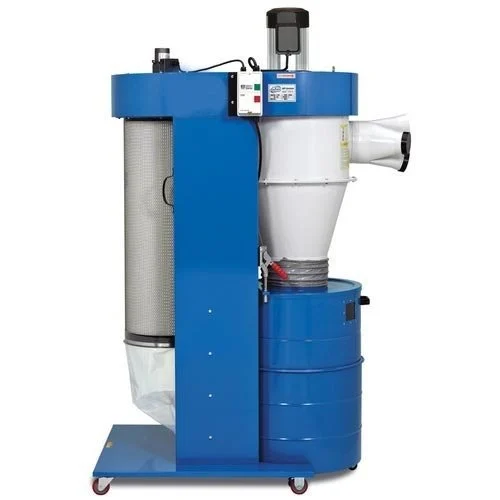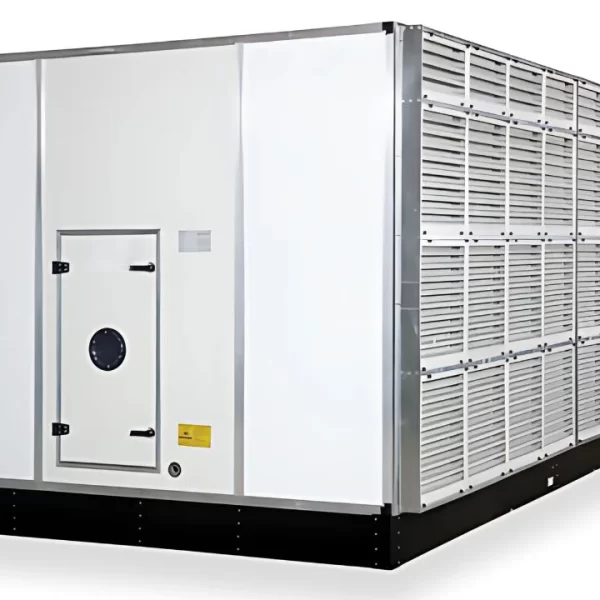Dust collection systems are engineered and designed to filter airborne dust particles and debris that can cause damage to plant equipment, create a hazardous work environment, and negatively impact plant production.
Installation of a new dust collection system for your facility either by replacing an old unit or expanding your existing operation, can mean an improvement in plant maintenance, waste collection, an increase in product quality, and plant efficiency and production. A new dust collection project can be a long process. Let’s start by exploring the top 5 benefits of a dust collection system.
These systems offer several significant benefits that enhance workplace safety, efficiency, and compliance. One of the primary advantages of dust collectors is improved air quality. By filtering out harmful particles, they prevent respiratory issues among workers, reduce allergens, and create a healthier workspace.
Cleaner air leads to fewer health-related absences, resulting in higher productivity and employee well-being. Additionally, dust collectors contribute to the longevity of industrial equipment. Excessive dust accumulation can cause machinery to clog, overheat, or corrode, leading to frequent breakdowns and costly repairs. By preventing dust buildup, these systems extend the lifespan of equipment and reduce maintenance expenses. Another crucial benefit is regulatory compliance. Industries must adhere to environmental and workplace safety regulations set by organizations like OSHA and the EPA. A dust collection system helps businesses meet air quality standards, avoid hefty fines, and maintain a safe work environment.
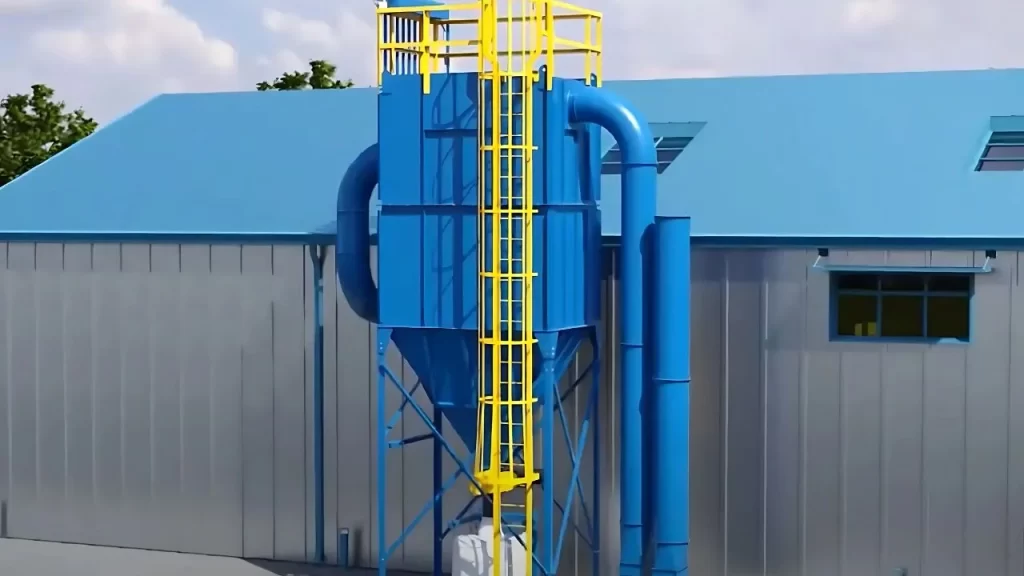
What Is a Dust Collector?
Dust collectors are a kind of air control equipment used in warehouses, factories and other industrial areas. These machines collect and remove harmful matter and gas fumes from manufacturing and production processes and purify and filter dust and particulates that are often released into the workplace. Dust collectors can improve air quality by using a filter to separate matter and releasing clean air into the environment.
Importance of Dust Collection Systems
Dust collectors are extremely important in warehouses and factories that may rely on pure air for workers’ safety. When blasting a surface in a designated blast cabinet, the coating or debris of the blasted area may break down into smaller particles. Pressurized air nozzles may also produce a large amount of dust inside the cabinet.
Because your facilities produce dust and other harmful materials, you should use the appropriate type and size blast cabinet dust collector. The blast dust collector should also be energy efficient, as an underpowered machine may create a larger mess or make the area unsafe for employees.
There are several reasons that dust collection systems are vital to the warehouse and factory workplace:
- Visibility: Reducing dust clouds can increase operators’ and employees’ ability to see the work area.
- Function: When the machine collects harmful materials, all other devices will function more smoothly, and you prevent damage to integral parts.
- Operator safety: Workers’ health can improve with the addition of dust collectors that minimize hazardous particles in the air.
- Workplace optimization: Consistent removal of dust from the air can prevent the contamination of other machines and optimize workplace functions.
- Cleanliness: A clean work environment will contain filtered air that is healthy and safe for all employees and machines
Understanding Industrial Dust Collection Systems
Industrial dust collection systems are essential in maintaining a safe and clean environment in various industries, including manufacturing, construction, and chemical processing. These systems are designed to capture and remove airborne particles, preventing dust from accumulating in workspaces and ensuring that workers are not exposed to harmful substances.
Dust Collector – The main unit that captures dust and other particulates from the air. It can take various forms, such as baghouses, cartridge collectors, or cyclone separators.
Airflow System – The system of ducts and pipes that carry contaminated air to the dust collector. It is designed to handle large volumes of air, ensuring effective dust removal without obstructing airflow.
Filtration System – The heart of the dust collector, which can be a fabric filter, a pleated cartridge, or a metal mesh, depending on the nature of the dust. This system captures particles as the contaminated air passes through it.
Clean Air Discharge – Once the air has been filtered, the clean air is released back into the environment or reintroduced into the workspace. This step ensures that air quality is maintained.
Dust Disposal – Collected dust is safely stored or removed from the system, typically using a hopper or bin. Depending on the industry, this dust may need to be treated or disposed of according to environmental standards.
4 Most Common Types of Dust Collectors
The most common types of dust collectors used in industrial environments are:
- Pulse jet dust collectors
- Shaker dust collectors
- Cartridge dust collectors
- Cyclone dust collectors
Pulse Jet Dust Collectors
A pulse jet dust collector, also referred to as a pulse jet bag filter or pulse jet baghouse, is a dry fabric filtration system designed to remove the collected particulate matter and dust from the surface of the filter media with bursts of compressed air. The system provides excellent filtration efficiency and can eliminate potentially harmful particulate matter and gas fumes from entering work environments or from being released into the atmosphere. Pulse cleaning is usually performed “online” so the process can operate continually even with a single module.
Shaker Dust Collectors
Where compressed air is not available or impractical, shake-cleaning baghouse systems, or simply, shaker dust collectors are an excellent alternative. Shaker fabric filtration uses a shaker cleaning system to release the collected dust particles from filter media surfaces by mechanically shaking the filter bags. The shaking can be achieved manually or by using a motor connected to a rack supporting the filter bags. The system can clean off-line when the airflow is temporarily halted or it can be cleaned in sections one compartment at a time. The compartmented feature provides continuous cleaning and simultaneously allows individual compartments to be taken offline for servicing.
3. Cartridge Dust Collectors
Cartridge dust collectors use pleated filter cartridges that offer a large surface area for capturing fine dust particles. The air passes through the cartridges, and dust is collected on the surface while clean air flows through. These collectors are known for their high efficiency and are commonly used in environments where fine or hazardous dust is generated, such as in the automotive, electronics, and chemical industries. Cartridge collectors are compact, making them suitable for smaller spaces.
4. Cyclone Dust Collectors
Cyclone dust collectors use centrifugal force to separate larger particles from the air. As air enters the system, it is spun in a circular motion inside a cylindrical chamber, causing heavier particles to be thrown to the outer wall, where they fall into a collection bin. The clean air exits through the top of the cyclone. Cyclone collectors are particularly effective for handling coarse dust and are often used in woodworking, metalworking, and food processing industries. They are simple to maintain and can handle high-volume dust loads.
The Importance of Dust Collectors
Dust collectors play a crucial role in maintaining a safe, healthy, and efficient working environment in various industries. These systems are designed to capture and remove harmful dust particles and other airborne contaminants that can pose risks to both workers and equipment. Below are several key reasons why dust collectors are so important:
Efficient Filtration
Dust collectors feature advanced filters (e.g., fabric bags, cartridges) to effectively capture fine and coarse particles, ensuring clean air in the workspace.
Energy Efficiency
Modern dust collectors are designed to consume less energy, improving overall system efficiency while reducing operational costs.
Compact Design
Many dust collectors come in space-saving models, making them ideal for smaller workspaces while still offering powerful dust removal capabilities.
Automatic Cleaning
Some systems feature automatic filter cleaning mechanisms to ensure continuous high performance without requiring frequent manual intervention.
Safety Features
Dust collectors often include safety measures, such as explosion-proof components or fire suppression systems, to minimize the risks associated with combustible dust.
In Conclusion:
Dust Collectors are vital for ensuring a clean, safe, and efficient work environment. They protect workers’ health, enhance equipment longevity, support regulatory compliance, and reduce the risk of fire or explosion. Investing in a reliable dust collection system is essential for maintaining smooth operations and promoting overall workplace safety
Website: https://www.ventilair.in/
Mobile: +919971026641
Email: sales@ventilairfans.com
